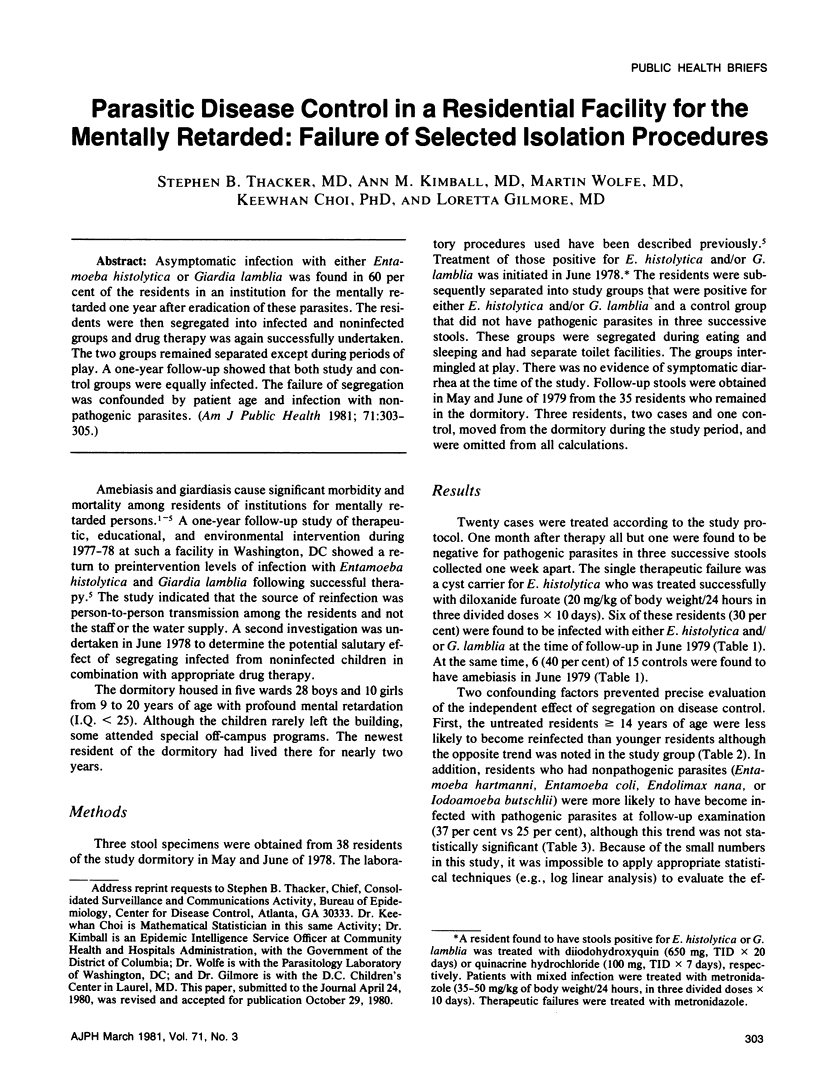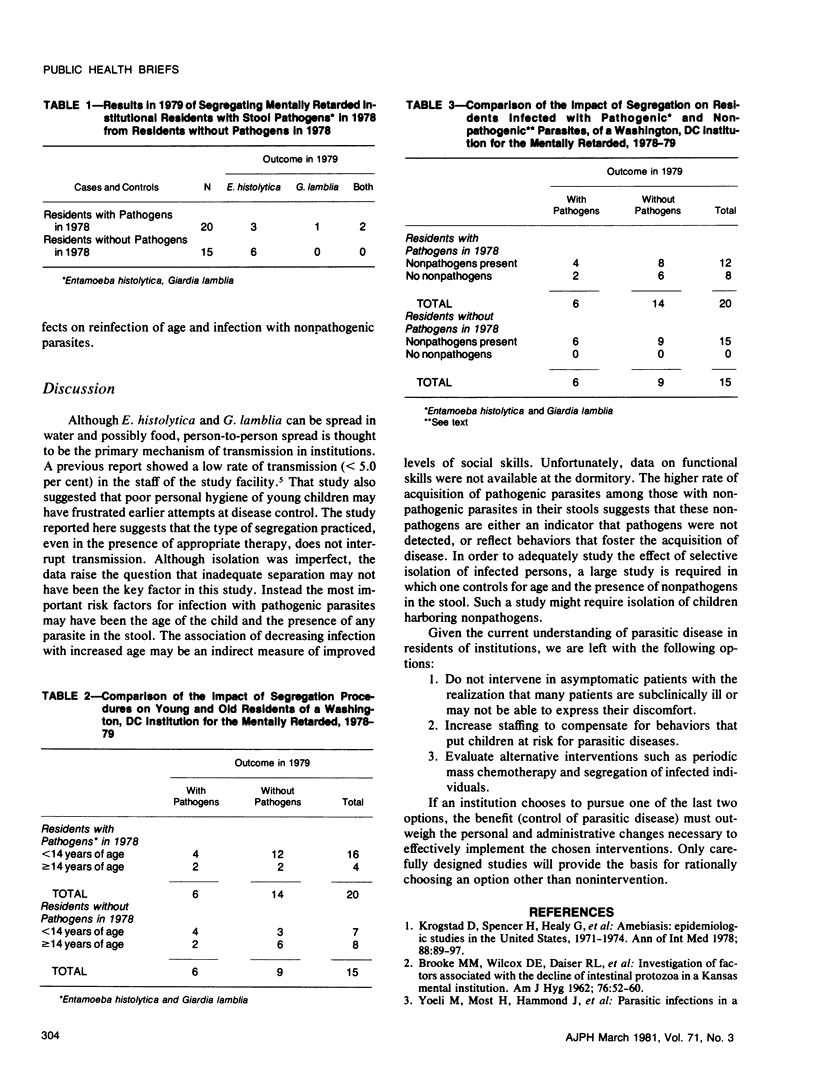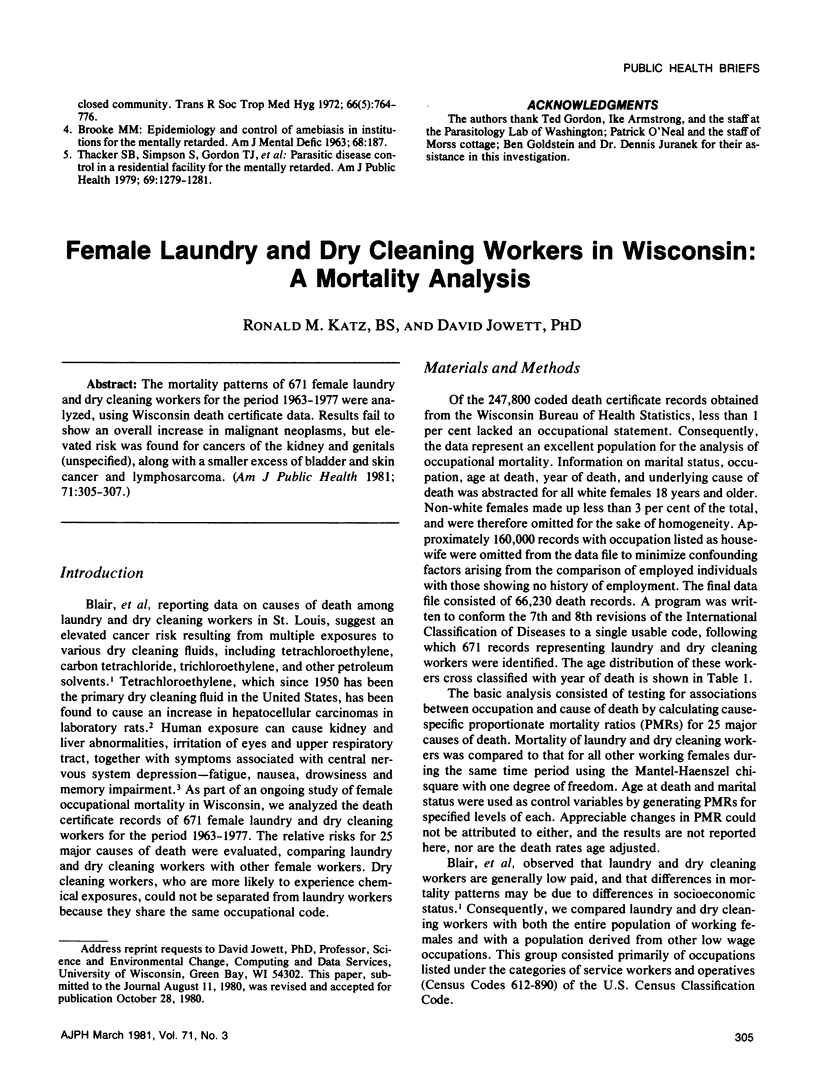Abstract
Asymptomatic infection with either Entamoeba histolytica or Giardia lamblia was found in 60 per cent of the residents in an institution for the mentally retarded one year after eradication of these parasites. The residents were then segregated into infected and noninfected groups and drug therapy was again successfully undertaken. The two groups remained separated except during periods of play. A one-year follow-up showed that both study and control groups were equally infected. The failure of segregation was confounded by patient age and infection with nonpathogenic parasites.
Full text
PDF


Selected References
These references are in PubMed. This may not be the complete list of references from this article.
- BROOKE M. M. EPIDEMIOLOGY AND CONTROL OF AMEBIASIS IN INSTITUTIONS FOR THE MENTALLY RETARDED. Am J Ment Defic. 1963 Sep;68:187–192. [PubMed] [Google Scholar]
- BROOKE M. M., WILCOX D. E., KAISER R. L., MELVIN D. M. Investigation of factors associated with the decline of intestinal protozoa in a Kansas mental institution. Am J Hyg. 1962 Jul;76:52–60. doi: 10.1093/oxfordjournals.aje.a120264. [DOI] [PubMed] [Google Scholar]
- Krogstad D. J., Spencer H. C., Jr, Healy G. R., Gleason N. N., Sexton D. J., Herron C. A. Amebiasis: epidemiologic studies in the United States, 1971-1974. Ann Intern Med. 1978 Jan;88(1):89–97. doi: 10.7326/0003-4819-88-1-89. [DOI] [PubMed] [Google Scholar]
- Thacker S. B., Simpson S., Gordon T. J., Wolfe M., Kimball A. M. Parasitic disease control in a residential facility for the mentally retarded. Am J Public Health. 1979 Dec;69(12):1279–1281. doi: 10.2105/ajph.69.12.1279. [DOI] [PMC free article] [PubMed] [Google Scholar]


